Good Habits Examples: How to Develop and Maintain Them

Sorry, there were no results found for “”
Sorry, there were no results found for “”
Sorry, there were no results found for “”

Have you ever felt stretched thin trying to juggle work, family, and hobbies? You’re not alone. But did you know there’s a simple secret to staying organized, stressing less, and having more fun?
Good habits. 😇
Think about it: brushing your teeth twice a day, putting your shoes on the right feet, or even saying ‘please’ and ‘thank you.’
These habits, or the small daily actions we take, shape our lives over time. Good habits can improve your daily routines, reduce stress, enhance personal and professional success, and contribute to long-term achievements.
In this blog, we’ll explore 50 examples of good habits to help you create and sustain routines for lasting success. Let’s get started. 🏃♀️
A good habit is a positive and beneficial behavior you consistently practice, enhancing your overall well-being. It involves repeating actions that lead to favorable long-term results, whether physical, emotional, or psychological.
For instance, regular exercise, healthy eating, and daily meditation are good habits because they contribute to better health, improved mood, and reduced stress.
Good habits often need effort and discipline to develop, but once established, they can become second nature. Despite the initial effort, they can significantly enhance your quality of life In terms of wellness. Habits like consistent sleep schedules and balanced nutrition support your body’s circadian rhythms and nutrient needs, enhancing cognitive function and emotional stability.
For productivity, establishing a habit of time-blocking—dedicating specific periods for focused work—can minimize distractions and improve task efficiency, leading to better output with less effort.
These habits don’t just improve overall well-being; they create a cycle of positive reinforcement. By improving your physical and mental health, they help you achieve more, feel better, and maintain a healthier, happier life.
Not all habits work in your favor. While some bad habits, like smoking and excessive drinking, are obvious, others are subtler, such as negative self-talk, mindless technology use, and poor time management.
Good habits fuel personal growth, well-being, and success. They align with goals and boost physical and mental health.
On the other hand, bad habits increase stress and anxiety, impede goal achievement, harm your health, and disrupt the balance needed for a fulfilling life.
Sometimes, our brains go on autopilot, making it hard to distinguish between helpful and harmful habits. Some habits can be tricky to identify as harmful, even if they seem beneficial.
For instance, daily exercise is often seen as a good habit, but overdoing it without proper rest can lead to burnout and injury.
The key is to ensure that your habits genuinely support your overall well-being and goals.
Build and maintain good habits with ClickUp’s free Personal Habit Tracker Template. It helps you stay motivated by tracking your progress daily and visually showing how consistent you are. Try it out!
Understanding good and bad habits is just the beginning. To effectively build new habits or swap out negative ones, it’s crucial to grasp the science behind them, specifically the habit loop and self-directed neuroplasticity. Let’s break it down. ⚒️
This cycle consists of four stages—cue, craving, response, and reward. It begins with a cue—a trigger, such as feeling stressed. This cue leads to craving a specific outcome, like relief or pleasure.
You then respond by performing the habit, such as reaching for a snack. Finally, the reward reinforces the behavior, making it more likely to repeat.
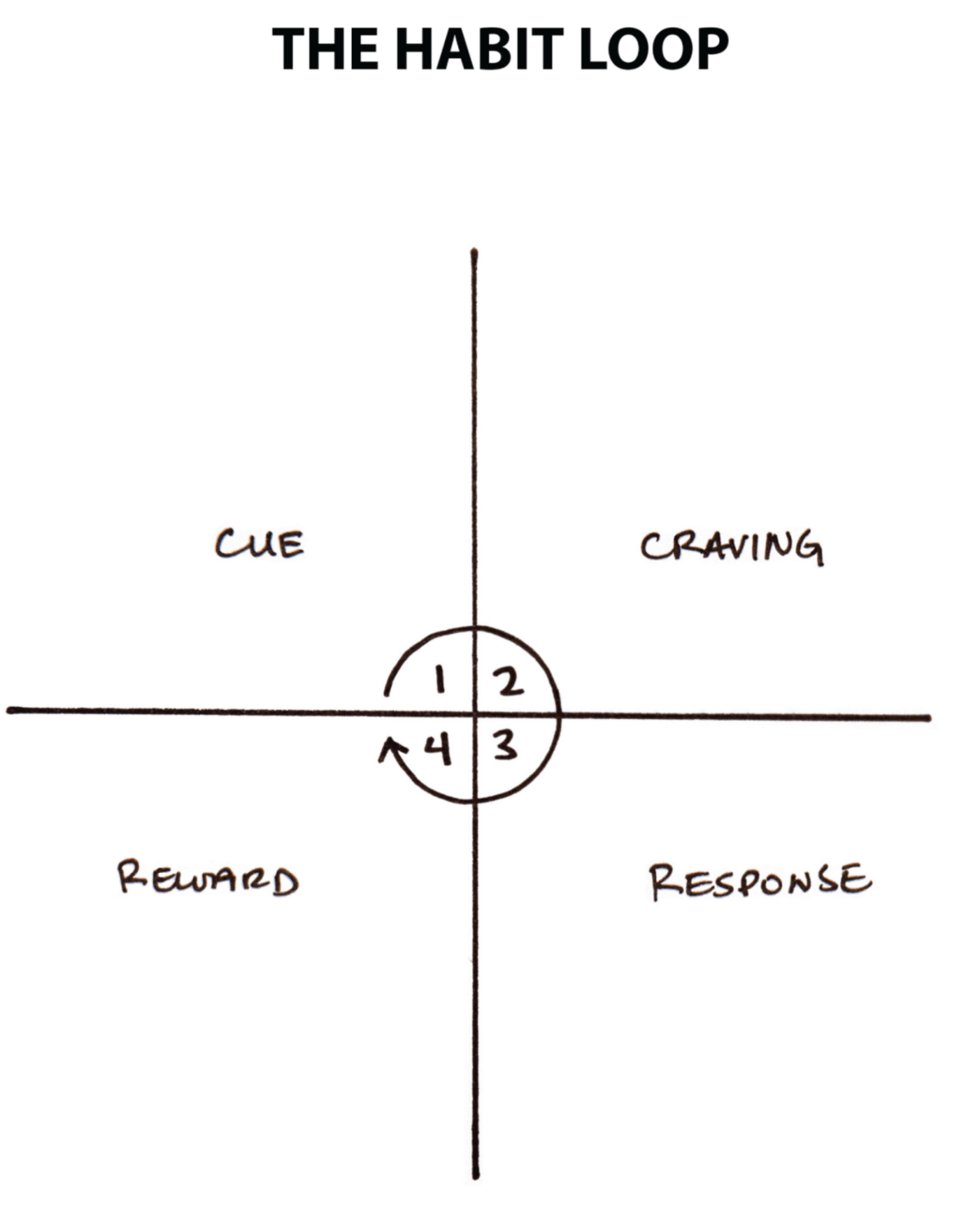
This concept, defined by Dr. Jeffrey Schwartz and popularized by Dr. Rick Hanson in Hardwiring Happiness, involves actively reflecting on how new habits make you feel and making conscious efforts to reinforce them.
By intentionally savoring and internalizing positive moments, you gradually build lasting neural pathways (or habits) that support happiness and well-being.
To build positive habits, start small, use clear cues, and track your progress. Reflect on the benefits and adjust as needed. Consistency and patience will help you solidify and integrate these good habits into your daily routine.
Also Read: 75 Hard Templates
Since habits are long-lasting, why not build ones that align with your highest priorities?
Here are 50 examples of good habits that can enhance various aspects of your life and help you effortlessly make positive, enduring changes.
Cultivating mental habits like mindfulness and resilience helps manage stress and improve focus.
Mindfulness keeps you present, reducing anxiety and stress levels while enhancing overall well-being. Resilience helps you recover from setbacks and maintain balance during challenges, leading to better emotional stability and cognitive flexibility.
Just as regular exercise keeps you fit and a structured morning routine sets a positive tone for the day, developing healthy habits can enhance your overall well-being and contribute to a more fulfilling life.
Cultivating these habits involves self-discipline to enhance your ability to stick to routines and achieve long-term goals.
Use ClickUp’s Exercise Log Template to keep track of your fitness goals and progress.
This template can help you:
Good financial habits are crucial for long-term stability and wealth. Budgeting and saving reduce financial stress, while smart investing builds wealth and provides future opportunities.
Regular financial check-ups help adapt to changes and optimize financial health.
Adopting effective work habits increases productivity and job satisfaction. Managing your time and prioritizing tasks helps achieve a healthier work-life balance and lowers the risk of burnout.
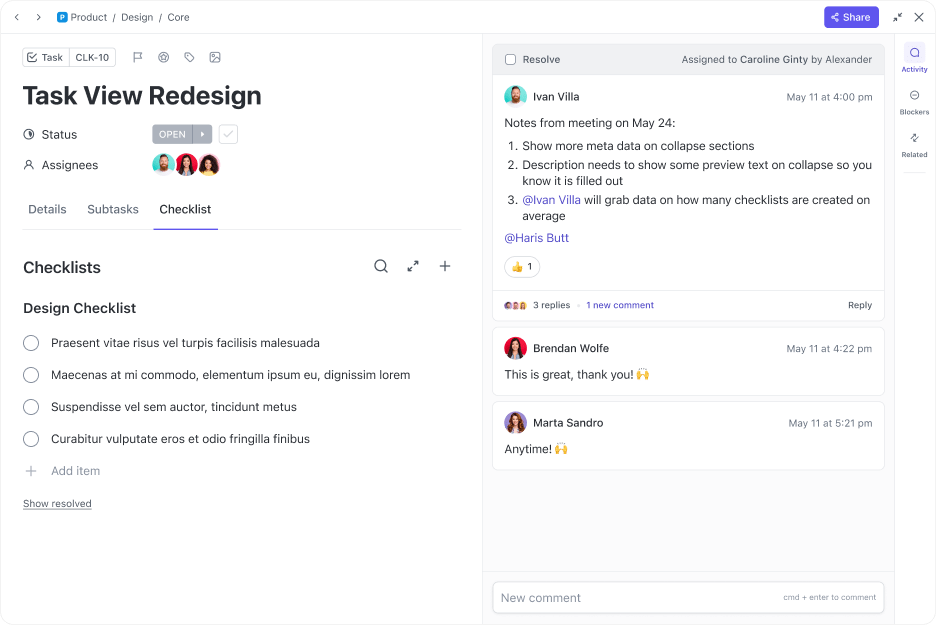
Strong social habits improve relationships and professional connections by fostering effective communication, trust, and mutual respect.
💡Pro Tip: Build a monthly social calendar with ClickUp’s Calendar Planner Template to stay organized with me-time activities and social commitments. To keep it up-to-date, assign a dedicated time each week to review and update your calendar. Add social events, birthdays, anniversaries, weekly rituals, or other important dates.
Developing good habits can be transformative, leading to greater productivity, health, and overall well-being. However, building lasting habits takes more than just a desire to change.
These are some effective strategies to help you create and sustain new habits:
It is a clever way to build new habits by piggybacking on the ones you already practice. Your brain is great at sticking to habits you’ve built over time.
For example, you probably don’t forget to brush your teeth or make coffee in the morning. That’s because these habits have become second nature.
Habit stacking takes advantage of this by linking a new habit to an existing one. Instead of creating a new time and place for your new habit, you simply attach it to something you already do.
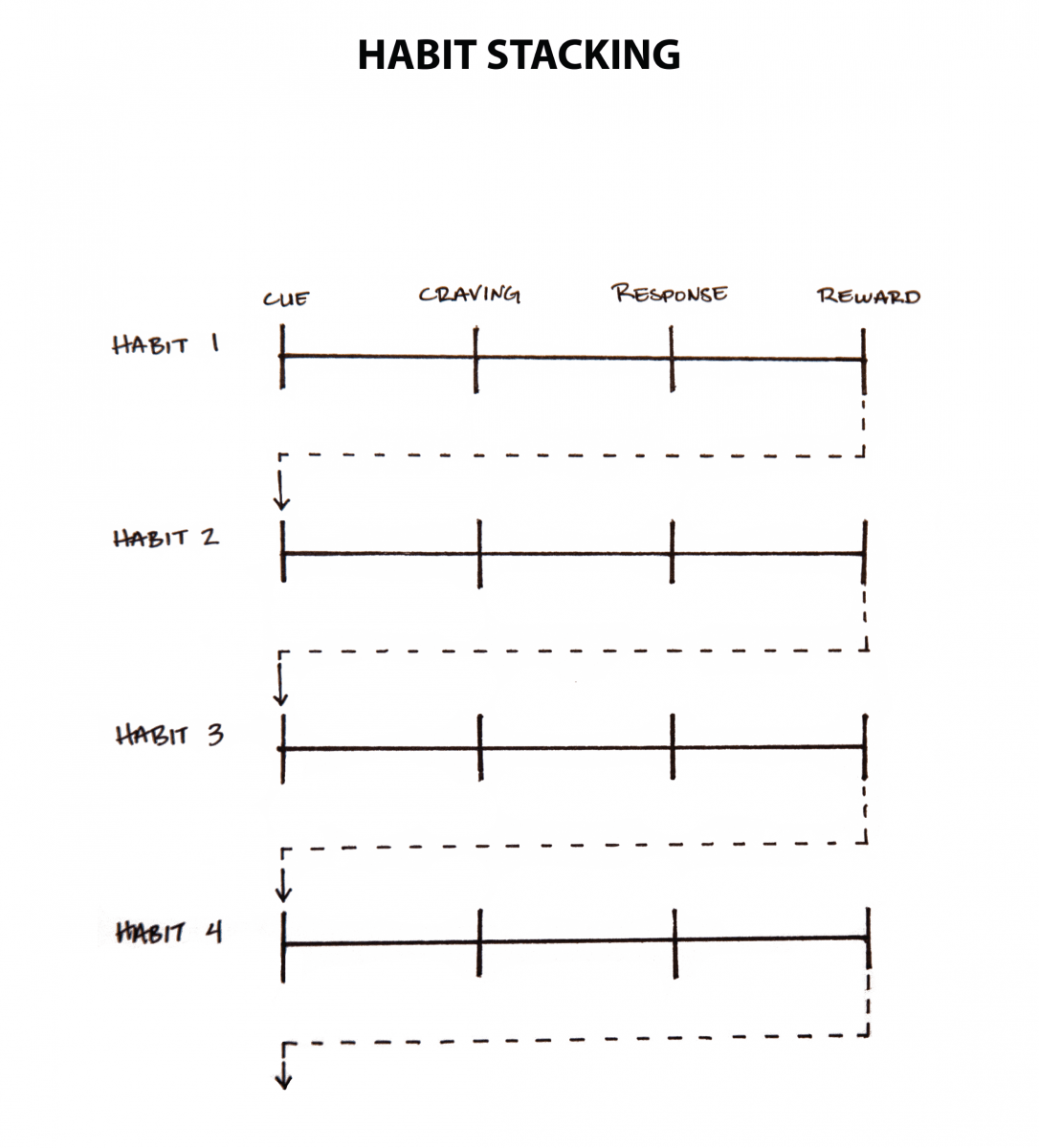
To get started, use this simple formula:
After [CURRENT HABIT], I will [NEW HABIT]
Here are some examples:
Once comfortable with basic habit stacking, you can combine multiple habits for a more extensive routine. For example, your morning stack might look like this:
To succeed in habit stacking, remember to choose an effective cue and align the new habits with your current routine to achieve the best outcomes.
Your environment plays a crucial role in habit formation. By adjusting your surroundings at work and home, you create a supportive setting that can reduce friction and make it easier to stick with new habits.
By doing so, you arrange options and cues to nudge you toward better choices.
Here are a few tips with examples to help you:
This involves rewarding yourself when you successfully complete a habit. For example, you might treat yourself to a favorite activity after a workout or set aside time for a hobby after a productive workday.
The key is to associate positive emotions with the new behavior. This feeling of reward helps build the habit because your brain releases dopamine, a chemical linked to anticipation of pleasure.
The dopamine surge you get from celebrating helps reinforce the habit and makes you more likely to stick with it.
Incorporating technology can greatly enhance your habit-building efforts. ClickUp, with its versatile features, helps you achieve just that.
Although it’s often recognized for its project management capabilities, ClickUp also excels at setting and tracking personal and professional goals. It simplifies your daily routines and allows for tailored workflows, making it easier to establish and maintain new habits.
This is how you can leverage ClickUp to build and track daily habits.
Start by setting clear, achievable goals with ClickUp Goals, which breaks down your objectives into smaller, manageable tasks.
Link tasks or lists to your Goal, and ClickUp will automatically track your progress as you complete them. For instance, you might set a Goal to ‘Complete 10 workout sessions this month’ and monitor your success using various metrics, such as numerical targets.

Use ClickUp’s Calendar View to visualize and manage your habits. Scheduling specific times for your new habits, such as exercising or studying, can help you stay organized and accountable.
With drag-and-drop functionality, you can easily set up, adjust, and track your tasks, ensuring you remain on track with your goals. Seeing your habits laid out on a calendar helps you manage your time effectively and adjust your schedule as needed.

Stay on top of your habits with ClickUp Reminders. Set reminders for your daily tasks, like taking medication or attending a class, and get notified before deadlines.
You can add reminders from anywhere in ClickUp, include attachments, set recurring schedules, or even delegate tasks to your team.
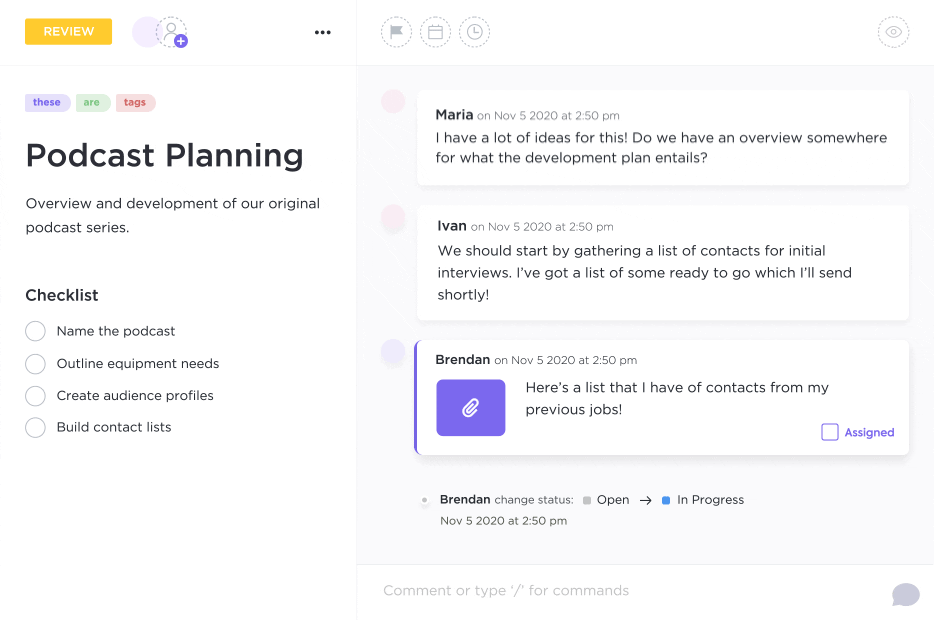
ClickUp’s Time Tracking makes it easy to develop and monitor your habits.
You can log time spent on habit-related tasks from your desktop, mobile, or browser and sort or filter this data to pinpoint where you need to focus more.
You can view the total time spent, adjust your logs as needed, and maintain accurate records of your progress.
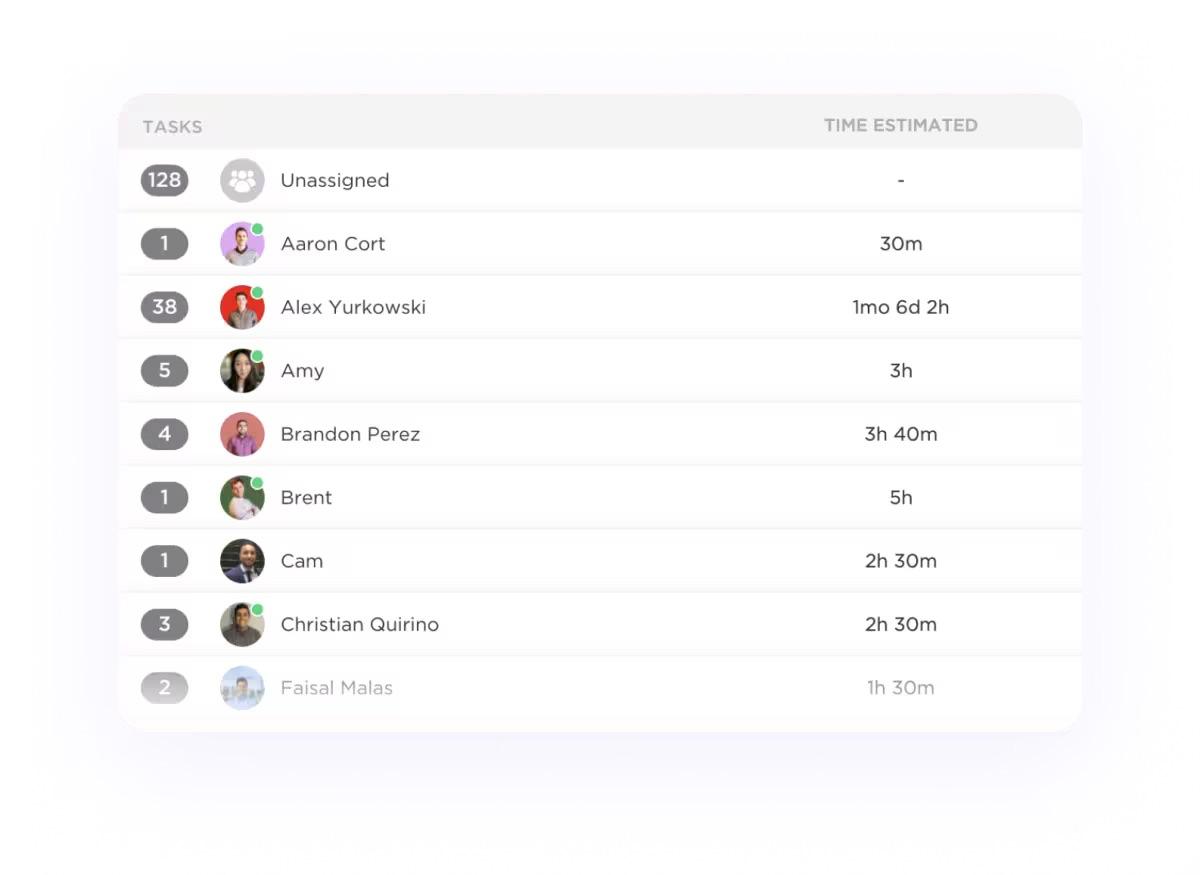
Customize your time sheets to see your daily, weekly, or monthly habit development, and use ClickUp’s Integrations with tools like Toggl and Harvest for seamless tracking.
The ClickUp Personal Habit Tracker Template is designed to simplify tracking and managing your habits. With this template, you can set goals, monitor your progress, and see your successes and setbacks in real time.
It’s a great tool for staying organized and improving your daily routine. You can use it to:
👀 Bonus: Explore habit-tracking templates by ClickUp to customize your journey, effortlessly monitor your progress, and stay inspired every step of the way.
When building new habits, start with small, manageable changes rather than attempting a complete overhaul of your routine.
Starting small makes big goals more achievable by avoiding the discouragement often associated with trying to make drastic changes all at once. Here are some practical tips to get started:
Accountability, whether through a habit buddy, friend, social group, or habit tracker, can significantly enhance habit formation.
Knowing that someone else is aware of your goals can give you that extra push and make you more committed to sticking with them. Having to report your progress can stir up feelings of pride or even guilt.
This emotional boost or nudge helps bridge the gap between what you intend to do and what you actually do, making it easier to build and stick to good habits.
Habits are driven by cues and cravings, which subconsciously lead us to perform certain actions. To effectively break a bad habit, we need to address its root cause. This involves identifying the triggers that prompt the habit and understanding the cravings that follow.
Here are a few actionable strategies to replace bad habits with healthier ones:
Developing good habits is essential for enhancing various aspects of your life, from personal well-being to professional success. Positive routines lead to long-term benefits such as increased productivity, better health, and happiness.
By starting small and being consistent, you build a strong foundation for lasting change. Remember, habit formation is a gradual process—each small step you take brings you closer to your goals.
ClickUp’s robust features can support your habit-formation journey: set clear objectives with goals, stay organized with the calendar View, and apply customizable templates and reminders to keep track of your progress.
Sign up to ClickUp for free today!
© 2025 ClickUp